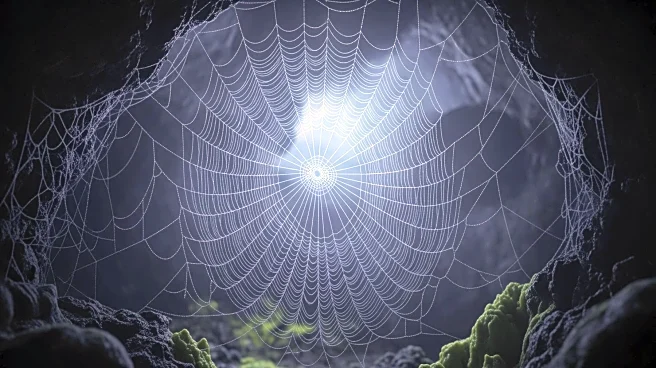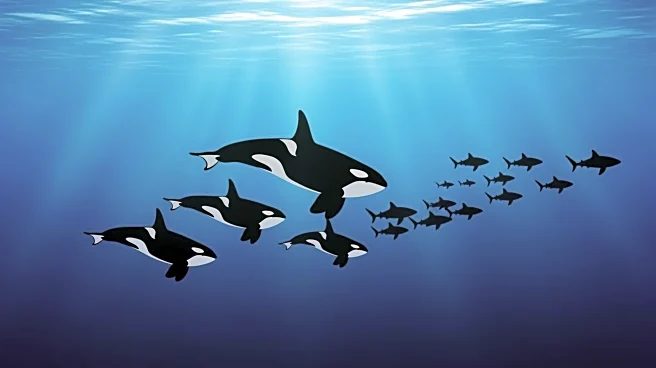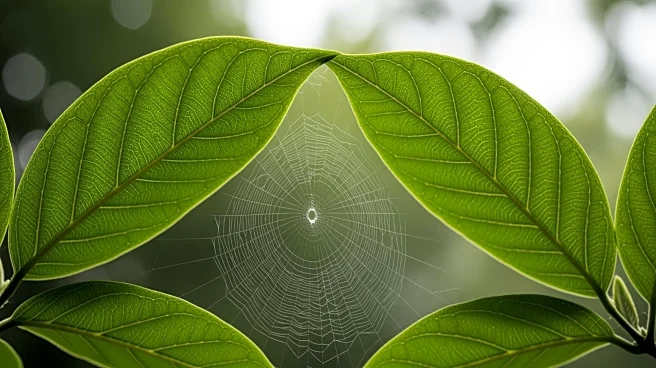What's Happening?
Researchers have uncovered what is believed to be the world's largest spiderweb inside Sulfur Cave, located on the border between Greece and Albania. The discovery includes over 111,000 spiders living
in a colossal web within the cave's permanently dark zone. The web spans 1,140 square feet and is composed of thousands of individual funnel-shaped webs. This marks the first evidence of colonial behavior in two common spider species, Tegenaria domestica and Prinerigone vagans, which were previously not known to cohabit in such large numbers. The spiders feed on non-biting midges that consume microbial biofilms from sulfur-oxidizing bacteria, adapting to the cave's unique sulfur-rich environment.
Why It's Important?
The discovery of this massive spider colony is significant as it challenges existing knowledge about spider behavior and adaptation. The spiders' ability to thrive in a sulfur-rich environment and exhibit colonial behavior suggests remarkable genetic plasticity. This finding could lead to new insights into how species adapt to extreme conditions, potentially influencing studies in evolutionary biology and ecology. The unique ecosystem within Sulfur Cave highlights the importance of preserving such habitats, which may offer further scientific revelations about species adaptation and survival strategies.
What's Next?
Researchers are planning further studies to explore the genetic differences between the cave-dwelling spiders and their relatives outside the cave. These studies aim to uncover more about the spiders' adaptation mechanisms and the ecological dynamics within Sulfur Cave. Preservation efforts are crucial, given the cave's location between two countries, which may pose challenges. Continued research could provide deeper understanding of the spiders' microbiomes and their interactions with the cave's sulfur-rich environment.
Beyond the Headlines
The discovery raises ethical considerations regarding the preservation of unique ecosystems and the potential impact of human activities on such habitats. The spiders' adaptation to extreme conditions may offer insights into genetic resilience and the potential for species to survive in changing environments, which is increasingly relevant in the context of global climate change.













